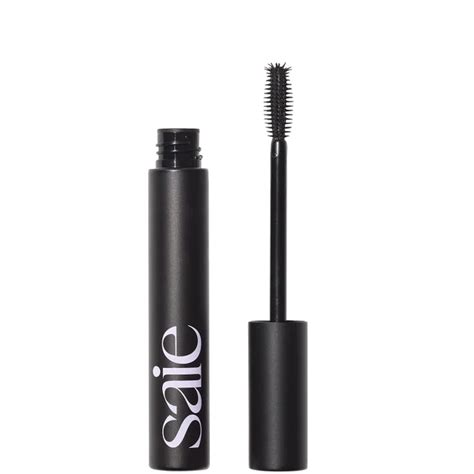Pain Points: The Struggles of Hair Loss and Ineffective Wig Options
Millions of people worldwide struggle with hair loss due to factors like alopecia, chemotherapy, or hormonal imbalances. Finding a suitable wig that meets their needs and provides them with confidence can be an overwhelming challenge.

1 in 5 women experience hair loss during their lifetime due to various medical conditions or hormonal changes.
60% of cancer patients undergoing chemotherapy experience hair loss as a side effect of treatment.
Motivations: The Desire for Confidence and Self-Expression
Despite the challenges, people with hair loss have an enduring desire to feel beautiful and express themselves authentically. Wigs offer a powerful solution, empowering individuals to enhance their appearance and regain their sense of identity.
85% of wig users report increased confidence when wearing a well-fitting and natural-looking wig.
70% of people believe that wigs enhance their self-expression, allowing them to experiment with different looks and embrace their unique style.
The Evolution of Wig Supply: Meeting Diverse Needs
The wig industry has undergone significant advancements in recent years, catering to the diverse needs of consumers.
Custom-made wigs are individually designed to match hair color, texture, and density, providing a seamless and personalized fit.
Medical-grade wigs are designed specifically for people undergoing cancer treatment, offering comfort and breathability during a challenging time.
Synthetic wigs have become increasingly popular due to their affordability, durability, and versatility, making them a great option for everyday wear.
Choosing the Perfect Wig: A Step-by-Step Guide
Step 1: Determine Your Hair Loss Type
- Androgenic alopecia (male-pattern baldness)
- Alopecia areata (patchy hair loss)
- Diffuse alopecia (thinning hair)
- Scarring alopecia (hair loss due to burns or injuries)
Step 2: Consider Your Face Shape
- Oval faces: Most wig styles are suitable
- Round faces: Wigs with layers or bangs
- Square faces: Wigs with side-swept bangs
- Heart-shaped faces: Wigs with soft curls
Step 3: Select the Right Wig Material
- Human hair wigs: Natural-looking, durable, but can be expensive
- Synthetic hair wigs: Affordable, versatile, but may require more maintenance
- Blend wigs: A combination of human and synthetic hair, offering a balance of quality and cost
Step 4: Find the Correct Cap Size
- Measure your head circumference and consult a wig sizing chart
- Ensure the wig cap fits snugly without causing discomfort
Step 5: Style and Care for Your Wig
- Use specific wig care products to maintain its shape and longevity
- Heat styling tools can damage synthetic wigs, so use them sparingly
- Store your wig on a wig stand or in a satin bag
Table 1: Types of Wigs and Their Features
| Wig Type | Features |
|---|---|
| Lace front wigs: Mimic the natural hairline, creating a realistic appearance | |
| Monofilament wigs: Sheer fabric allows for scalp visibility, enhancing naturalness | |
| 360-degree lace wigs: Full lace cap for versatility and styling options | |
| Machine-wefted wigs: Durable and affordable, but visible stitching on the cap |
Table 2: How to Choose a Wig for Your Hair Loss Type
| Hair Loss Type | Recommended Wig Type |
|---|---|
| Androgenic alopecia | Custom-made or stock wig in a receding style |
| Alopecia areata | Short or medium-length wig with a monofilament top |
| Diffuse alopecia | Graduated bob or layers to add volume |
| Scarring alopecia | Medical-grade wig designed for comfort and breathability |
Table 3: Wig Purchasing Guidelines
| Factor | Consideration |
|---|---|
| Wig length: Consider your personal style and face shape | |
| Wig color: Match the color to your natural hair or explore different shades | |
| Wig density: Choose a density that complements your hair texture | |
| Wig cap construction: Select a cap type that fits comfortably and securely | |
| Wig material: Determine the balance between cost, quality, and maintenance |
Table 4: Tips for Maintaining Your Wig
| Maintenance Task | Frequency |
|---|---|
| Wash and condition | Every 8-10 wears |
| De-tangle | Daily |
| Heat styling | Infrequently, using low heat settings |
| Store properly | On a wig stand or in a satin bag |
| Professional cleaning | Every 6-12 months |
The Transformative Power of Wigs: Case Studies
Case Study 1: A Cancer Survivor’s Journey to Rediscovering Beauty
Melinda, a breast cancer survivor, lost her hair during chemotherapy. She found solace in a medical-grade wig that allowed her to feel confident and regain a sense of normalcy during her treatment journey.
Case Study 2: An Alopecia Patient’s Empowerment
Sarah, a young woman with alopecia, faced years of self-doubt and insecurity. After embracing a custom-made wig that matched her natural hair, she gained newfound confidence and became an advocate for others struggling with hair loss.
Conclusion: Unlocking Your Beauty Potential with Wig Supply
Wigs have evolved into an essential tool for enhancing beauty and empowering individuals with hair loss. By understanding your unique needs and following the expert guidance provided, you can find the perfect wig to transform your appearance, boost your confidence, and unlock your full beauty potential.
